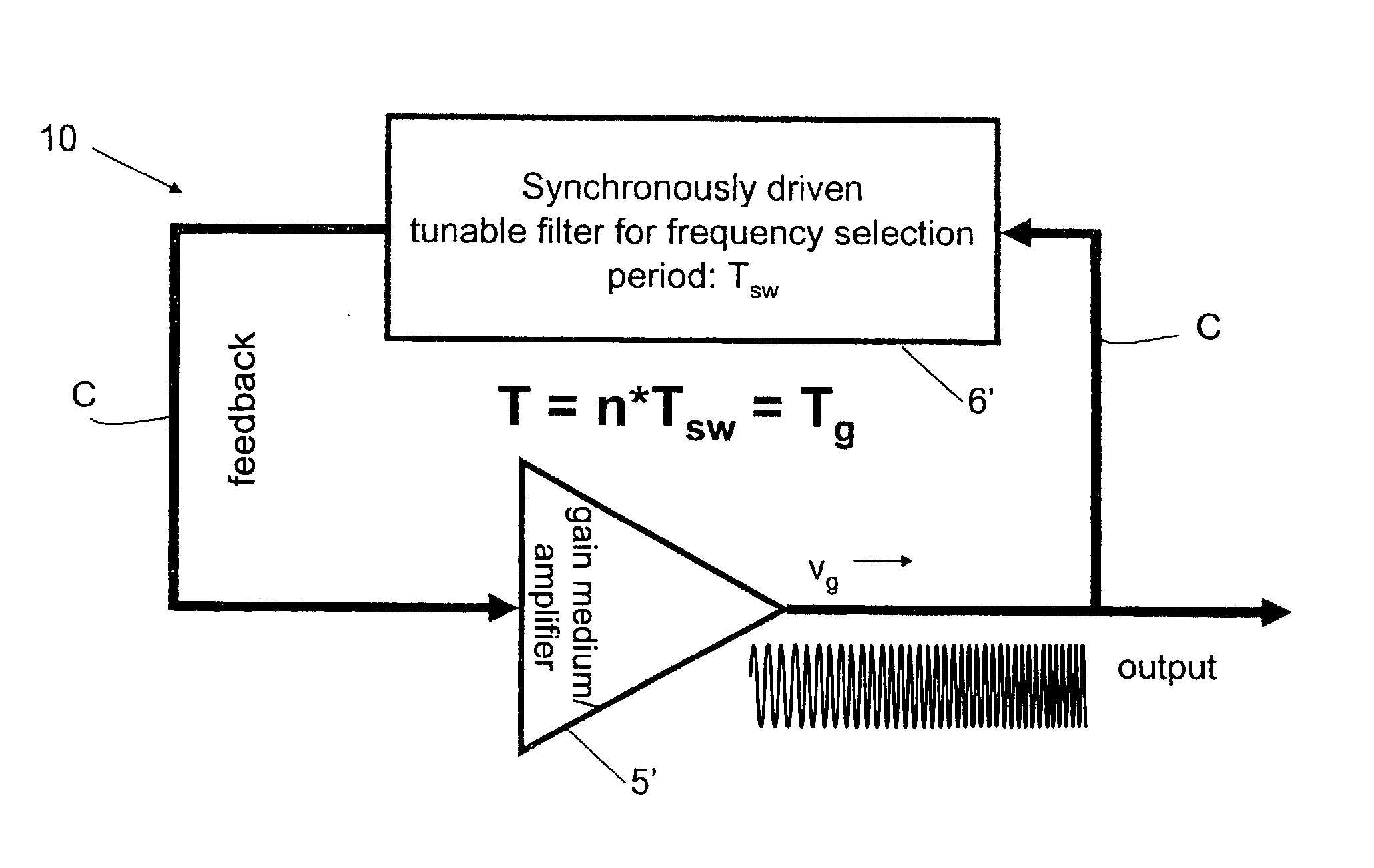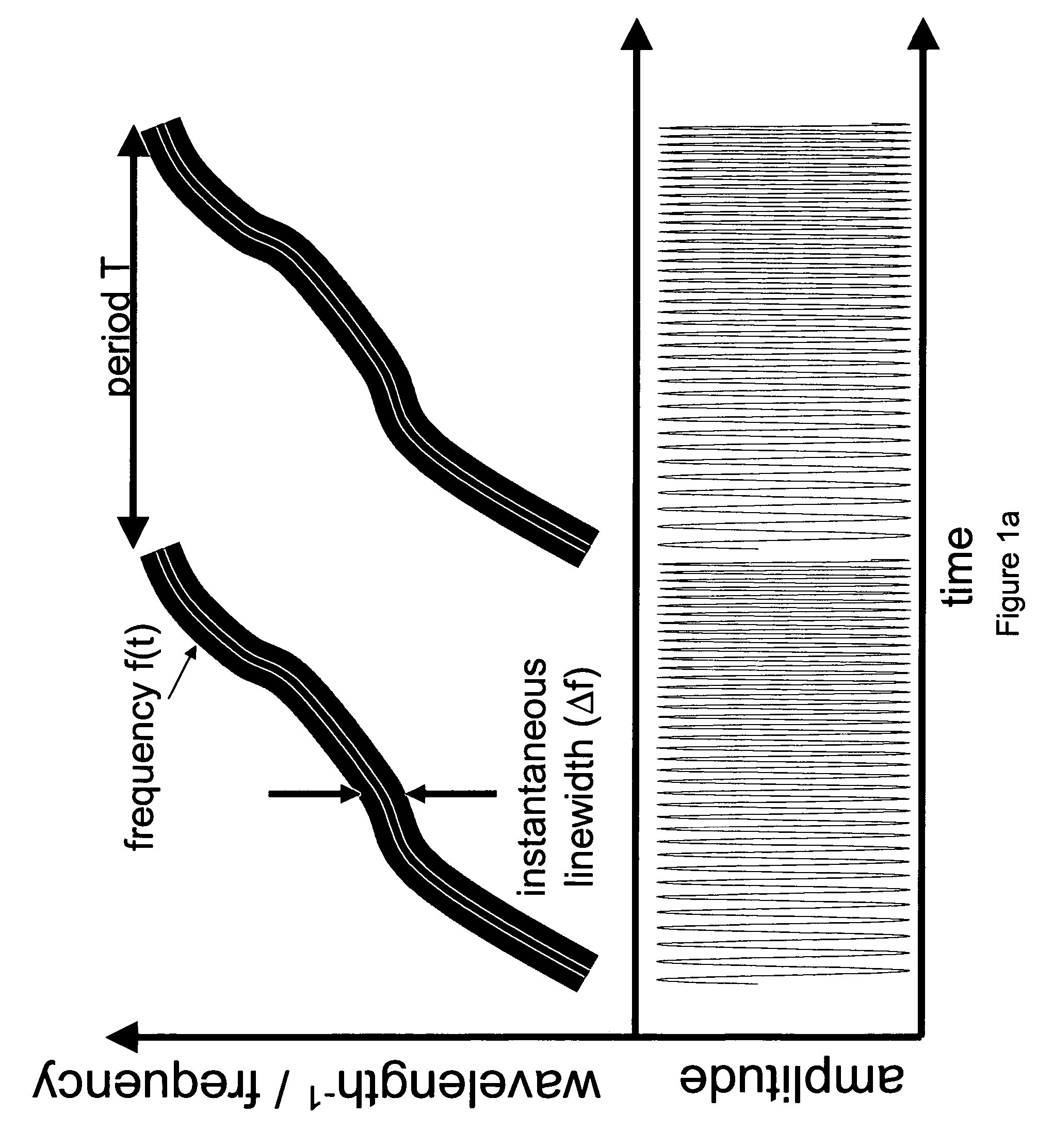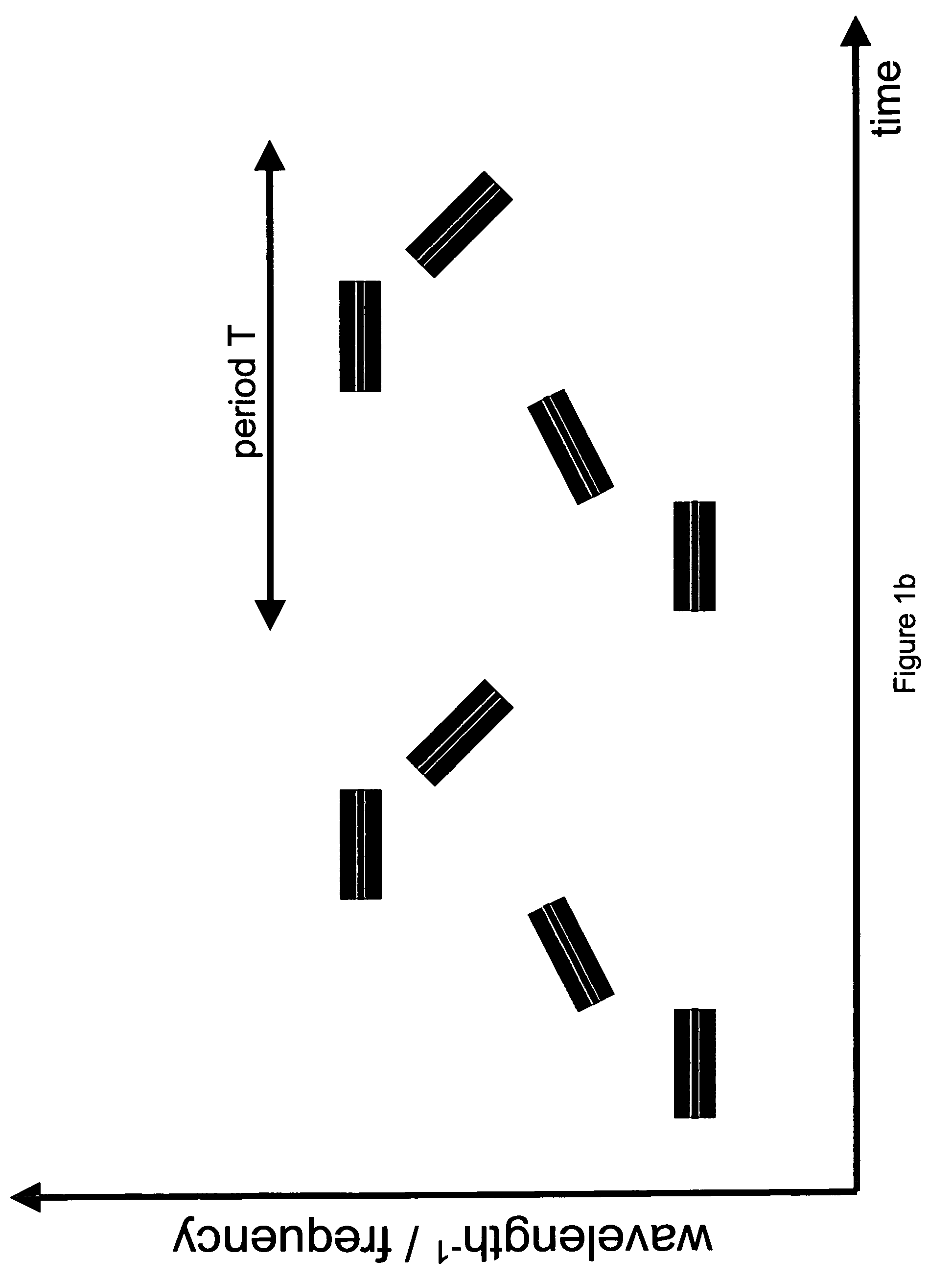Mode locking methods and apparatus
a mode locking and apparatus technology, applied in the field of wave generation, can solve the problems of many industrial and technical applications, deficient source of electromagnetic radiation and resultant output wave characteristics with respect to a set of parameters, and many linewidth limitations plague other,
- Summary
- Abstract
- Description
- Claims
- Application Information
AI Technical Summary
Problems solved by technology
Method used
Image
Examples
embodiment 15
[0094]Without loss of generality, different laser cavity configurations can be used depending upon the properties of the devices used and optimization of desired performance characteristics of the laser. For example, the cavity embodiment 15 shown in FIG. 7 is appropriate for a filter operating in a transmission mode, such that desired wavelengths / frequencies are transmitted through the filter. Depending upon the type of filter used, the filter may have the property that light, which is not in the pass band, is retroreflected rather than transmitted. In this case, an isolator is required between the filter and the gain medium to prevent feedback of the unwanted light from the filter to the gain medium. The output coupler can be placed at various positions in the cavity depending upon the desired operation.
[0095]In FIG. 7, the output coupler OPC, such as an optical coupler, is positioned after the gain element or amplifier. This provides a higher power output since the intensity in t...
embodiment 22
[0105]The configuration of the linear cavity system 21 shown in FIG. 13 is appropriate for a filter F which operates by transmitting the desired wavelengths or frequencies. FIG. 14 shows another example of a linear cavity embodiment 22 which is suitable for use with a filter F which operates by retroreflecting the desired wavelengths or frequencies.
[0106]The linear cavity has some advantages compared to ring cavities which can be used to achieve optimum operation. For example, in the configuration 21 shown in FIG. 13, the light propagates through the filter twice per round trip. This enhances the filtering function provided by the filter. Since the light propagates through the fiber delay L twice, the length of fiber required for to achieve a given time delay is one half of that required in the ring cavity where the light propagates through the fiber once per round trip. In the geometry shown, the mirror M1 may also be a Faraday mirror or similar nonreciprocal reflecting element. Th...
PUM
 Login to View More
Login to View More Abstract
Description
Claims
Application Information
 Login to View More
Login to View More - R&D
- Intellectual Property
- Life Sciences
- Materials
- Tech Scout
- Unparalleled Data Quality
- Higher Quality Content
- 60% Fewer Hallucinations
Browse by: Latest US Patents, China's latest patents, Technical Efficacy Thesaurus, Application Domain, Technology Topic, Popular Technical Reports.
© 2025 PatSnap. All rights reserved.Legal|Privacy policy|Modern Slavery Act Transparency Statement|Sitemap|About US| Contact US: help@patsnap.com



